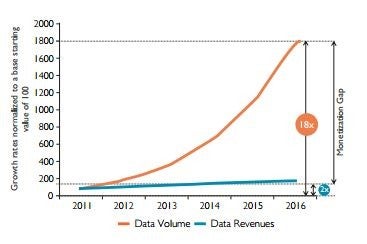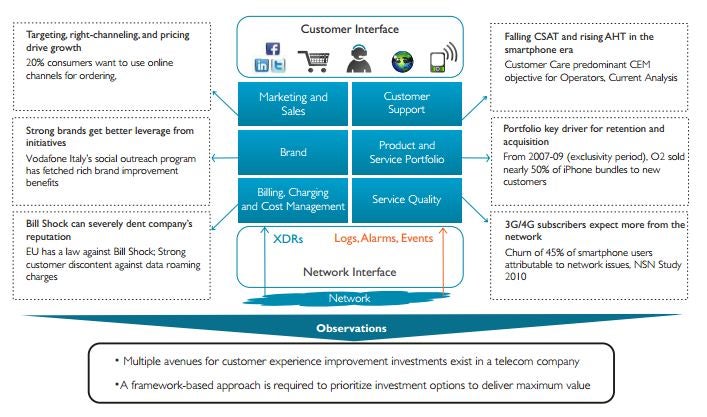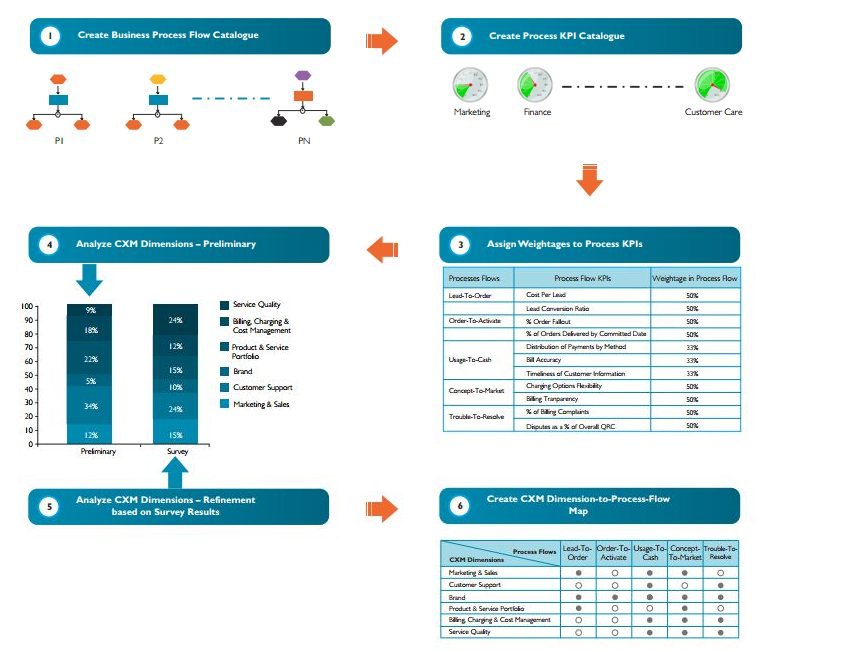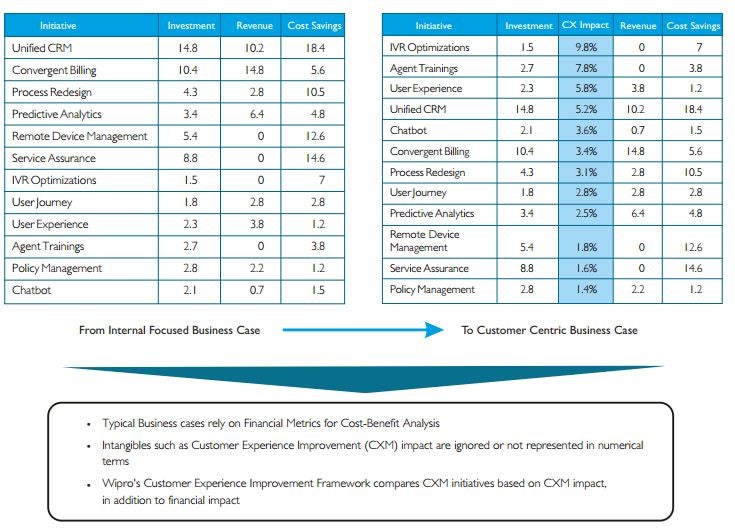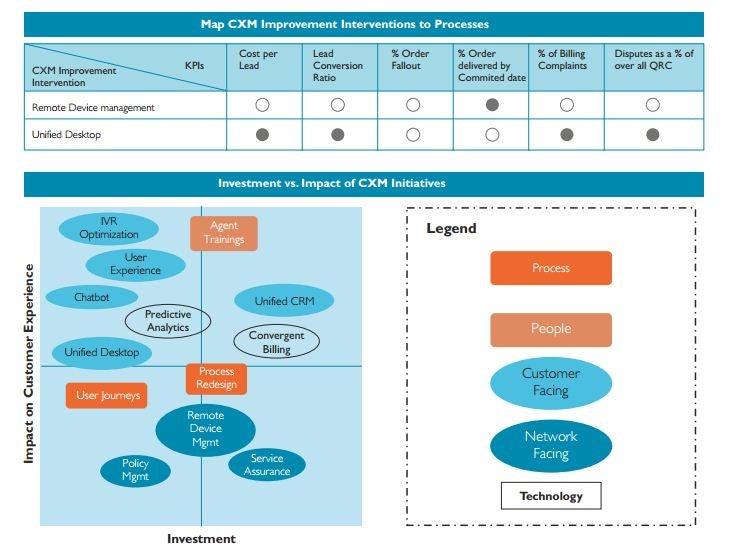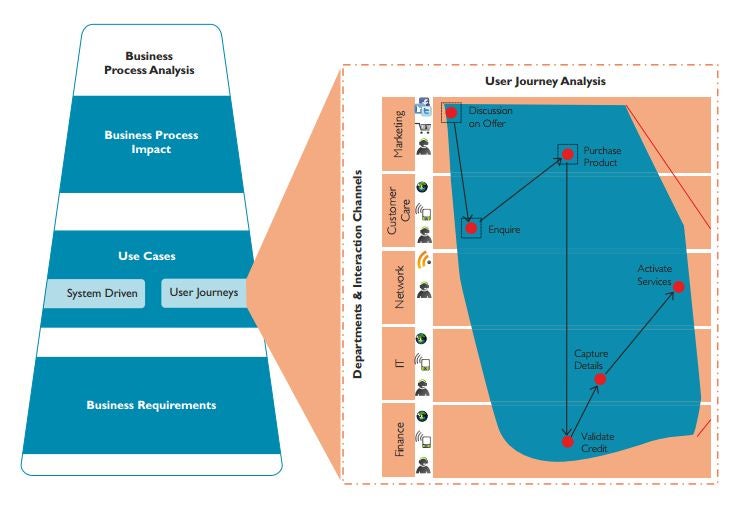- Falling Value Perception: Telecom companies continue to score poorly in customer value perception. Even though CSPs have built the network and systems infrastructure that powers service delivery, consumers regard them only as bit-pipe providers, crediting OTT players such as Apple, Google and Amazon for value added services, and faulting CSPs for service disruptions. OTT players have benefited from this perception of being value creators, at the expense of CSPs.
- Rapidly Changing Consumer Preferences: CSPs’ legacy networks, systems, and processes have not kept pace with rapidly changing customer preferences for new services. For example, customers are increasingly demanding real-time billing information and preferring online channels to conventional channels for service consumption. Additionally, growing device diversity and demand for high bandwidth content have placed greater demands on networks. The inability of CSPs to match customer expectations has led to customer dissatisfaction and churn.
These challenges are compounded by growing consumer expectations for a best-in-class customer experience. Customers have grown accustomed to the relatively seamless service experience provided in the retail and financial services sectors. As CSPs venture into providing more value added services, customers will begin to expect similar levels of customer service.
2. The Customer Experience Imperative for Communication Service Providers
In an industry where competition is fierce and disruptive innovations threaten traditional telco business models, customer experience improvement can address many of the challenges that CSPs face. Focusing on customer experience can enable CSPs to respond more effectively to customer requirements, build customer loyalty, and create a stronger value perception in the minds of customers. Additionally, customer experience improvement can generate sustainable competitive differentiation, improving prospects for long-term profitability.
Communication companies have realized that optimizing customer experience needs to be a cornerstone of their business strategy. Recent trends demonstrate this shift in CSP mindset, as shown below:
- A survey conducted by leading global telecom industry association TM Forum, indicates that customer experience is one of the top three priorities for transformation programs for telecom companies3
- Another survey, by industry analyst firm Ovum, indicates that improving customer experience and satisfaction is at the top of the list of priorities for CSPs across all geographies5
The following sections explore the challenges in defining, measuring and improving customer experience, and propose a value-driven approach to maximize the effectiveness of an organization-wide customer experience improvement strategy.
3. Challenges in Building Effective Customer Experience Improvement Programs
The complexities of service provider organizations such as fragmented systems, multi-vendor environments, multiple service and network layers, and regulatory obligations, present numerous challenges to customer experience improvement. These challenges can be broadly grouped under the categories of defining, measuring and improving customer experience.
3.1 Defining Customer Experience
To generate the largest impact, customer experience improvement should be an enterprise-wide initiative closely aligned to a service provider’s business goals. For instance, the customer experience objectives of a low-cost basic services operator are likely to be very different from those of a multi-service operator. Many CSPs struggle with developing a common organization-wide definition of customer experience, which is the first step towards undertaking a customer experience improvement program. In the absence of an organization-wide definition of customer experience, different departments in a telecom organization, such as marketing, network and customer service, often create their own definitions based on a blinkered view of organizational goals. This leads to a lopsided treatment of customer experience improvement initiatives.
As a result, initiatives that require significant investments but do not deliver meaningful customer experience improvements are often prioritized over others that are more impactful.
3.2 Measuring Customer Experience
Traditionally, customer experience has been measured by touchpoint surveys, single metric approaches such as NPS, or surveys commissioned by 3rd party market research firms such as JD Power and Nielsen. While these approaches provide broad directional feedback, they do not account for other feedback sources such as behavioral data about consumers or information scattered in the online world including social networks, Twitter, and blogs. Moreover, there is a rich treasure trove of information embedded in interaction records such as emails, call recordings and chat transcripts, which can provide rich insights into customer perception.
An inability to tap these myriad sources of customer feedback can lead to a flawed assessment of the current state of customer experience and the required actions for improvement.
3.3 Improving Customer Experience
Given the heightened CSP interest in customer experience today, assorted products with diverse capabilities ranging from ‘network decongestion’ to ‘contact centre productivity enhancement’, are being labelled as tools for customer service improvement. This presents a real challenge for CSPs as they need to break through the clutter of available products and determine which of these best meet their business objectives. The challenges in executing an effective customer improvement program are two-fold:
Identification - determining the initiatives that uniquely improve customer experience
Prioritization - selecting and focusing on those initiatives that will have the greatest impact on customer experience
Today, most CSPs lack a holistic approach to defining, measuring, and improving customer experience, which reduces the overall impact of a customer experience improvement program.
4. A Value-Driven Approach to Customer Experience Improvement
To achieve impactful customer experience improvements, CSPs require a uniform approach to define, evaluate and prioritize customer experience improvement initiatives and maximize the impact of a customer experience improvement program. Wipro has developed a holistic framework that takes into account multiple customer experience improvement dimensions from network quality to customer care. The framework also proposes a mechanism for prioritization of initiatives based on customer experience impact, as an enhancement to the traditional approach of prioritization based only on financial impact
The section below summarizes the various dimensions of customer experience. Enterprises must evaluate all dimensions while framing an enterprise-wide definition of customer experience improvement. Enterprises must also assess the relative importance of each dimension in relation to the organization’s overarching customer experience improvement goals. This will ensure that dimensions that have the highest impact on organizational goals receive the highest share of focus and investment.
4.1 Dimensions of Customer Experience in Telecom
TM Forum defines customer experience as “the result of the sum of observations, perceptions, thoughts and feelings arising from interactions and relationships between customers and their service provider(s”). This all-encompassing definition will need to be de-constructed to bring out the specific dimensions that contribute to the overall telecom customer experience.

